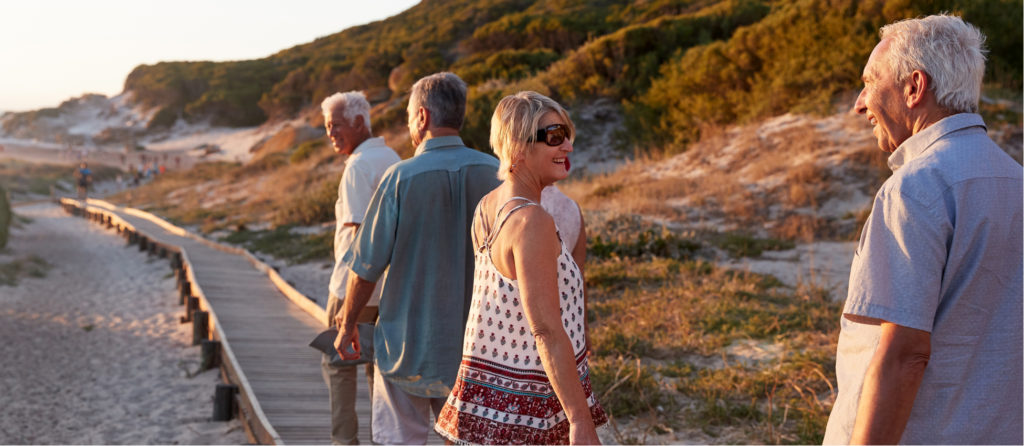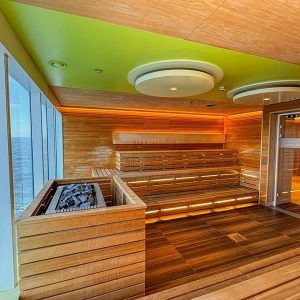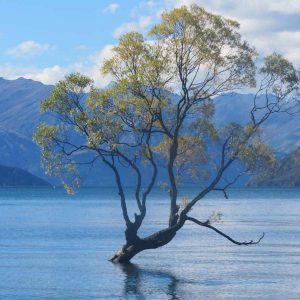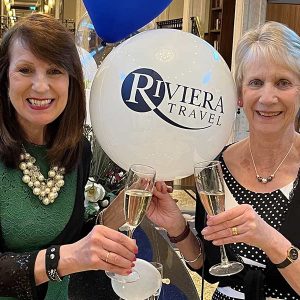A few days spent touring Ireland’s South East coastline with its fantastic beaches and medieval heritage was not nearly long enough to explore everything on offer – next time!
With an invitation to an Irish wedding at the wonderful Kilruddery House, just south of Dublin, we took the opportunity to extend the trip to explore Ireland’s fabulous South East. Famous for its miles of wild, unspoilt, beaches and its medieval history and buildings we packed a lot in and loved our whistle-stop tour.
Driving from Dublin Airport on the M50 ring road was easy taking the N/M11 down to Wexford where we stopped for a quick lunch before moving onto Waterford, home of the famous crystal. Its also claimed the origin of the old saying, “By Hook or by Crook” – derived from a vow by Oliver Cromwell to take Waterford by Hook (on the Wexford side of the estuary) or by Crook (a village on the Waterford side) hails from and we did drive up the Hook and down the Crook as part of our trip. We also saw Hook Lighthouse, the oldest functioning lighthouse in the world.
![Youghal town harbour by Will McGoldrick [CC-BY-SA-3.0] Youghal town harbour by Will McGoldrick [CC-BY-SA-3.0]](https://silvertraveladvisor.com/wp-content/uploads/2022/01/Youghal_town_harbour-by-Will-McGoldrick-CC-BY-SDA-3.0.jpg) Our first overnight stop was Youghal at the head of the Blackford River in East Cork, a town with Viking roots and full of medieval treasures. Around 1250 the medieval walls, which still remain in parts, were built to protect the town and today remain the most complete town walls in the Irish republic. Over the years notable characters such as Walter Raleigh, Oliver Cromwell, John Wesley, to name but a few, visited and lived in the town. For his services to the Crown, Raleigh was given more than 42,000 acres as well as properties in Youghal and Lismore by Elizabeth I and during the 17-year period he held land in Ireland he lived for short periods in Youghal, even being elected Mayor in 1588 and 1589. His Elizabethan gabled house, Myrtle Grove, is a rare example in Ireland of a 16th century unfortified house and is situated close to the Collegiate Church of St. Mary, which as well as having the oldest surviving roof of any church in Ireland is also the oldest church still in operation. Even more unusually it has the best collection of acoustic jars inserted into the wall of the choir for early amplification. In this area, known as the Raleigh Quarter, there are also some wonderful Georgian houses and gardens.
Our first overnight stop was Youghal at the head of the Blackford River in East Cork, a town with Viking roots and full of medieval treasures. Around 1250 the medieval walls, which still remain in parts, were built to protect the town and today remain the most complete town walls in the Irish republic. Over the years notable characters such as Walter Raleigh, Oliver Cromwell, John Wesley, to name but a few, visited and lived in the town. For his services to the Crown, Raleigh was given more than 42,000 acres as well as properties in Youghal and Lismore by Elizabeth I and during the 17-year period he held land in Ireland he lived for short periods in Youghal, even being elected Mayor in 1588 and 1589. His Elizabethan gabled house, Myrtle Grove, is a rare example in Ireland of a 16th century unfortified house and is situated close to the Collegiate Church of St. Mary, which as well as having the oldest surviving roof of any church in Ireland is also the oldest church still in operation. Even more unusually it has the best collection of acoustic jars inserted into the wall of the choir for early amplification. In this area, known as the Raleigh Quarter, there are also some wonderful Georgian houses and gardens.
![Youghal town walls by Will McGoldrick [CC-BY-SA-3.0] Youghal town walls by Will McGoldrick [CC-BY-SA-3.0]](https://silvertraveladvisor.com/wp-content/uploads/2022/01/685px-Youghal_Town_Walls-by-Will-McGoldrick-CC-BY-SA-3.0.jpg) Youghal High Streets is not quite as bustling as perhaps it used to be, though. still has some interesting shops with a choice of cafes and eateries. We ate at Aherne’s, who have a well-deserved reputation for seafood, run by three generations of the Fitzgibbon family. Unpretentious, friendly and with a congenial atmosphere the food was excellent. They also served the most delicious home-made brown bread I have ever eaten. The centre is quite compact so easy to undertake the historical walking tour. Overnight we stayed in a superior suite at the centrally located Roseville House, which offers excellent value and I highly recommend for quality, service and outstanding breakfasts.
Youghal High Streets is not quite as bustling as perhaps it used to be, though. still has some interesting shops with a choice of cafes and eateries. We ate at Aherne’s, who have a well-deserved reputation for seafood, run by three generations of the Fitzgibbon family. Unpretentious, friendly and with a congenial atmosphere the food was excellent. They also served the most delicious home-made brown bread I have ever eaten. The centre is quite compact so easy to undertake the historical walking tour. Overnight we stayed in a superior suite at the centrally located Roseville House, which offers excellent value and I highly recommend for quality, service and outstanding breakfasts.
In this area there are other places of interest, such as Midleton (the home of Jameson Whisky where you can tour the distillery) and nearby Ardmore, the oldest monastic site in Ireland with its impressive 12th century round tower and ruined cathedral. If you are staying longer it would be worth taking a boat up the Blackwater river to Lismore with its imposing castle overlooking the valley, which was highly recommended – next time!
From Youghal we headed to Cork, Ireland’s second city for a quick look around the centre and the delightful Victorian English market where fresh produce and speciality foods from the area are sold. From here we drove to Cashel and visited the Rock of Cashel, one of Ireland’s most historical sites which was the seat of Kings from the 4th century until 1101 when it was presented to the church, who built a complex which apparently has one of the most remarkable collections of Celtic art and medieval architecture to be found anywhere in Europe.
![Kilkenny Castle by Gerd Eichmann [CC-BY-SA-4.0] Kilkenny Castle by Gerd Eichmann [CC-BY-SA-4.0]](https://silvertraveladvisor.com/wp-content/uploads/2022/01/Kilkenny-Castle-by-Gerd-Eichmann-CC-BY-SA-4.0.jpg) Next was Kilkenny, a large medieval town with a grand Norman castle built in 1195. With many well-preserved churches and ecclesiastical buildings, there’s a lot to see. It’s also a centre for high-quality local crafts with fabulous galleries and workshops. Winding lanes full of shops and cafes. Kilkenny is a really beautiful town, but to explore it fully we would have needed another day – next time.
Next was Kilkenny, a large medieval town with a grand Norman castle built in 1195. With many well-preserved churches and ecclesiastical buildings, there’s a lot to see. It’s also a centre for high-quality local crafts with fabulous galleries and workshops. Winding lanes full of shops and cafes. Kilkenny is a really beautiful town, but to explore it fully we would have needed another day – next time.
Thirty-minutes-drive from Kilkenny in glorious countryside is the 500acre Mount Juliet Estate, our next overnight stay. The original manor house is now an exclusive luxury hotel with Michelin star dining and elegant accommodation. There is also a 93 room contemporary hotel built around the old stables, Hunter’s Yard, which is where we stayed. With its famous golf course designed by Jack Nicklaus it also has an equestrian centre and spa. During our stay some aspects of the service didn’t quite match its 5-star rating – hopefully just an off day as the Juliet Estate is definitely worth a visit.
![Jerpoint Abbey by Audrius Janecka [CC-BY-SA-4.0] Jerpoint Abbey by Audrius Janecka [CC-BY-SA-4.0]](https://silvertraveladvisor.com/wp-content/uploads/2022/01/Jerpoint_Abbey_Audrius-Janecka-CC-BY-SA-4.0.jpg) Jerpoint Abbey, an outstanding Cisterian abbey founded in the late 12th century with a visitor and exhibition centre is close by to Mount Juliet. The site of the Lost Town of Newton Jerpoint is also in the vicinity. Founded in the 12th century this apparent vibrant town of approximately 27 houses had 14 taverns – almost one for every two houses!
Jerpoint Abbey, an outstanding Cisterian abbey founded in the late 12th century with a visitor and exhibition centre is close by to Mount Juliet. The site of the Lost Town of Newton Jerpoint is also in the vicinity. Founded in the 12th century this apparent vibrant town of approximately 27 houses had 14 taverns – almost one for every two houses!
Our coffee stop was in Thomastown, a market town with a small, picturesque, main street. Driving on minor roads we crossed stunning countryside to the coast and our next stop, Curracloe Beach, where the opening scenes of Saving Private Ryan were filmed. A stunning, wide, white sand beach backed by dunes that stretched as far as the eye could see, it’s one of the longest beaches in Europe. Wonderful for a windswept walk along the water’s edge and one of the best beaches I have ever seen anywhere.
Our next destination was just outside the bustling market town of Gorey for our overnight stay at the renowned Marlfield House. With history dating back to Norman times and a wide boulevard main street with an array of independent shops and cafes Gorey is a bustling town.
![Curracloe Beach by Andreas F. Borchert [CC-BY-SA-3.0 de] Curracloe Beach by Andreas F. Borchert [CC-BY-SA-3.0 de]](https://silvertraveladvisor.com/wp-content/uploads/2022/01/Curracloe_Beach_Andreas-F.Borchert-CC-BY-SA-3.0-de.jpg) Our overnight stop was at Marlfield House a few miles outside Gorey. Set in 36 acres of gardens and woodlands, this luxury 19 bedroomed Regency Country House Hotel was built as a family home. Bought by the Bowes family, who lovingly restored it to its former genteel glory, they have been welcoming guests since 1977 and collected many awards along the way. Service and food were exceptional at this family run hotel. Highly recommended.
Our overnight stop was at Marlfield House a few miles outside Gorey. Set in 36 acres of gardens and woodlands, this luxury 19 bedroomed Regency Country House Hotel was built as a family home. Bought by the Bowes family, who lovingly restored it to its former genteel glory, they have been welcoming guests since 1977 and collected many awards along the way. Service and food were exceptional at this family run hotel. Highly recommended.
Other places in County Wexford we wanted to visit but sadly ran out of time: the Kennedy Homestead, following the journey of a famine emigrant to president; the Wicklow Mountains and Avoca; Powerscourt House (reputedly one of the top ten Houses and Mansions worldwide according to Lonely Planet) – next time.
The wedding in The Orangery at Kilruddery House, complete with marble statues brought back from Italy, was wonderful. A 17th century house with large parkland gardens dating back to 1682, Kilruddery is another Irish historical house worth exploring.
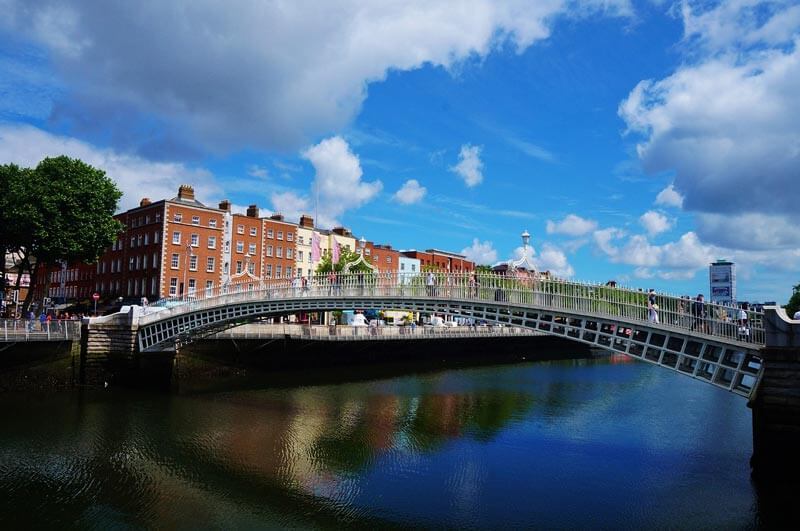 We ended our stay in Dublin, which we have previously visited. A great city, full of lively bars and restaurants, friendly atmosphere and a compact city centre which makes it easy to get around on foot or on a cycle tour. Following Ireland’s well-documented financial downturn a few years ago Dublin seems to be booming and buildings, particularly along the River Liffey, are breathing new life into the city – wonderful to see.
We ended our stay in Dublin, which we have previously visited. A great city, full of lively bars and restaurants, friendly atmosphere and a compact city centre which makes it easy to get around on foot or on a cycle tour. Following Ireland’s well-documented financial downturn a few years ago Dublin seems to be booming and buildings, particularly along the River Liffey, are breathing new life into the city – wonderful to see.
Ireland’s towns and villages have an interesting array of bars and traditional pubs, many of which haven’t changed for years and still retain a traditional Irish welcome. I’ve never been a fan of Guinness but it tasted completely different in Ireland – I think they must keep all the best barrels for themselves – I absolutely loved it.
The Emerald Isle is full of clichés and the South East was no exception: remarkably green and verdant countryside; extremely friendly and welcoming locals; delicious produce and seafood; miles and miles of stunning beaches; a rich history with a range of architectural gems to explore.
Sadly, our whistle-stop tour didn’t allow us to see everything but with appetites wetted and a new appreciation of Guinness by Hook or by Crook we will be back!
